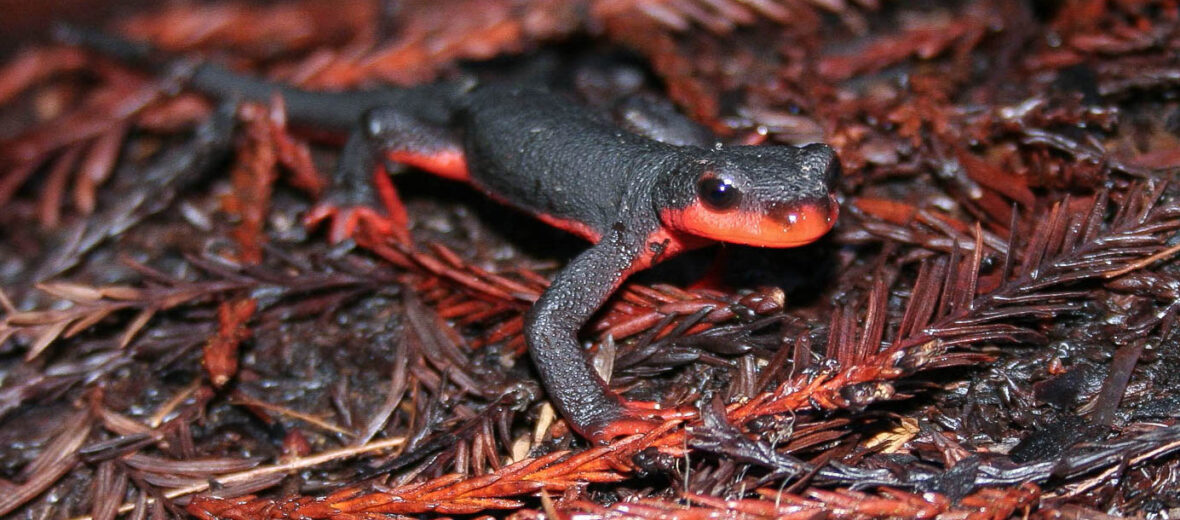
The redbelly newt, aka red-bellied newt, hails only from the coastal Redwoods and woodlands in northern California. They prefer mixed conifers, valley-foothill woodlands, montane hardwoods, and hardwood-conifer habitats. Unfortunately, these newts face the threats of habitat loss at the hands of residential and commercial development, the logging industry, and roads and railways dividing their territories (causing vehicle strike – being hit by vehicles); and invasive species, which result in predation, competition for food, and disease. The IUCN lists these newts as Vulnerable. Their populations are also decreasing.
First the Stats…
Scientific name: Taricha rivularis
Weight: Up to 1+ ounce
Length: Up to 7.5 inches, from snout to tail tip
Lifespan: Up to 30 years
Now on to the Facts!
1.) These, among many other newt species, are afflicted by Batrachochytrium salamandrivorans, or Bsal. This is a variant of Batrachochytrium dendrobatidis (Bd), a lethal fungal disease that has a nearly 100% mortality rate.
2.) Like other newts, they start life out in an aquatic larval form, similar to tadpoles, but looking more like axolotls.
3.) After up to 6 months they leave their watery world and take on a terrestrial form. They then lose their external gills and their lungs continue to fully develop, allowing them to breathe atmospheric oxygen.
4.) These newts are mostly fossorial (spend their lives underground).
5.) They are reproductively mature in 4 – 6 years.
But wait, there’s more on the redbelly newt!
6.) Once reproductively mature, the males will congregate at stream banks and camp out for up to 3 weeks; where the females will then join them, and mating takes place.
7.) Females lay up to 12 clusters of up to 16 eggs each; affixed to the bottoms of rocks, or on branches and roots that lean into the stream.
Did you know…?
Red-bellied newts contain enough of the neurotoxin called tetrodotoxin in their skin, embryos, and eggs to potentially kill an adult human. But this poison has to be ingested or injected into the blood stream.
8.) Due to their amazing homing ability, these newts can trek over several miles to find the same breeding spot (each year for males, and every other year for females).
9.) While typically relying on their brown topsides to camouflage themselves, if disturbed, they will pull their heads and tails back to display their bright-red undersides. This serves as a warning to the threat that they are very poisonous and are not to be trifled with.
10.) That being said, there is a species of garter snake that seems to be immune to the toxins in their skin and serves as their only known predator.
But wait, there’s still more on the redbelly newt!
11.) Like other newt species, redbelly newts have the ability to regenerate numerous body parts. This includes their limbs, tail, eyes, hearts, intestines, lower jaw, upper jaw, and even a damaged spinal cord.
12.) Crickets, earthworms, beetles, roaches, and other various invertebrates are all on the menu.
Now a Short Redbelly Newt Video!
This video also talks about the rough-skinned newt; a cousin of the redbelly newt.
Be sure to share & comment below! Also, check out the Critter Science YouTube channel. Videos added regularly!
Want to suggest a critter for me to write about? Let me know here.
Some source material acquired from: Wikipedia & IUCN
Photo credit: Ghegenbart



